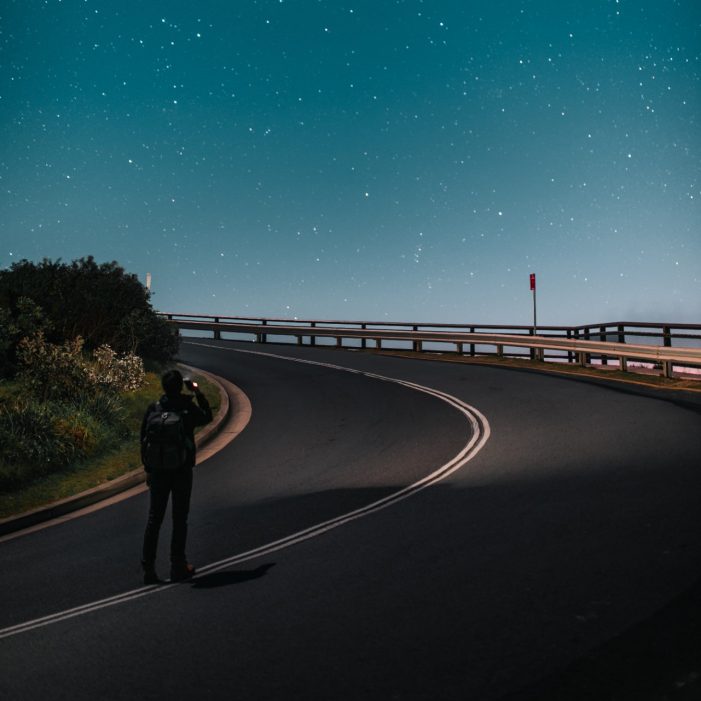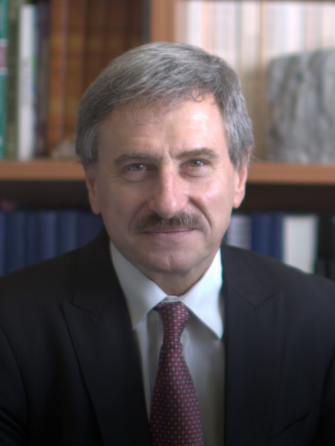Our people

ACA Management Team
Centre members
PhD and Masters students
Associate members

Peter Wilson
Director of Special Projects
p.wilson@kings.edu.au, opens in a new window
Currently, Peter is employed as Director of Special Projects with Southern Cross University. He is also owner and Executive Director of Otago Osmometers Ltd, an instrumentation company in Dunedin.

David Deamer
Research Professor
deamer@soe.ucsc.edu, opens in a new window
David Deamer is a Research Professor of Biomolecular Engineering at the University of California, Santa Cruz.

Richard Allen White III
Post-doctoral researcher - Washington State University
Rick is currently working as a senior post-doc at Washington State University and has been collaborating with Brendan Burns for over six years, working on the Shark Bay mat systems together. He has acted as an excellent mentor for several graduate students from the Burns lab.

Therese Morris
Sessional Academic
therese.morris@curtin.edu.au, opens in a new window
Therese Morris is an Earth system scientist from Curtin University in Perth, who has worked in both petroleum industry exploration geoscience and environmental impact assessment for over 20 years.

Bruce Damer
Doctor
bdamer@digitalspace.com, opens in a new window
Bruce Damer is an Associate Researcher in Biomolecular Engineering at the University of California, Santa Cruz and founder of DigitalSpace Corporation developing mission simulations and designs for NASA.


Georgia Soares
PhD graduate of the ACA
georgia.soares1@gmail.com, opens in a new window
Georgia is a recent PhD graduate of the ACA, whose thesis was on the identification of novel macroscopic fossils from the beginning of the great oxidation Event in 2.4 Ga rocks from Western Australia. She is currently searching for a post-doctoral position in Astrobiology.

Kathleen Campbell
Professor
ka.campbell@auckland.ac.nz, opens in a new window
Prof. Kathy Campbell is a geologist, paleoecologist and astrobiologist at the University of Auckland, New Zealand.

Eizo Nakamura
Professor
Eizo Nakamura has been leading the Pheasant Memorial Laboratory (PML) at the Institute for Planetary Materials, Okayama University at Misasa. Eizo does research in petrology, geochemistry, cosmochemistry, astrobiology and bio-medical chemistry. He is a representative of the Phase-2 Curation Facility at Misasa designated for the initial comprehensive analyses of samples to be returned from an asteroid Ryugu by Hayabusa 2 spacecraft on 6 December 2020.

Abigail Allwood
Doctor - Jet Propulsion Laboratory
abigail.c.allwood@jpl.nasa.gov, opens in a new window
My main research focus is detection and characterization of ancient microbial biosignatures in the rock record, including investigation of past habitability and taphonomic potential of rock sequences. My research emphasizes field geology and the multidisciplinary analysis of returned samples. I have worked on Early Archean age stromatolites of the Pilbara Craton, and associated sedimentary, hydrothermal and aqueously altered igneous rocks.

Ariel Anbar
Professor
anbar@asu.edu, opens in a new window
Ariel Anbar studies the geological, chemical and biological processes that shape the environment of Earth and other planets, and how they have changed through time. The study of these processes teaches us about the habitability of the Earth, the history of the environment and life, the effects of human activities on the environment, and the prospects for life beyond Earth. An author or co-author of over 100 refereed research publications, Anbar is also an education innovator who has developed a game-like online science course for non-scientists, Habitable Worlds (http://habworlds.org, opens in a new window).

Erica Barlow
Doctor
evbarlow@gmail.com, opens in a new window
I’m interested in studying microfossils and stromatolites. I’m currently working on the adaptation of life to the Great Oxidation Event, within rocks from the 2.4 Ga Turee Creek Group, Western Australia.

Brett Biddington
Doctor
biddingtonresearch@iinet.net.au, opens in a new window
Brett Biddington owns his own Canberra-based consulting firm, which focuses on space and cyberspace policy, security and industry development subjects. He is a member of the Government’s Australian Space Industry Innovation Council, Chair of the Space Industry Association of Australia and is also involved with the governance of Australian astronomy.

Elizabeth Blaber
Assistant Professor
blabee@rpi.edu, opens in a new window
Elizabeth A. Blaber, PhD, is an Assistant Professor at Rensselaer Polytechnic Institute. She earned her Bachelor of Medical Sciences (Honours) at the University of New South Wales, Sydney, Australia and her PhD in Molecular Genetics and Biochemistry from the same university.



Adrian Brown
Associate Member
adrian.j.brown@nasa.gov, opens in a new window
Dr Adrian Brown is currently working as the Mars2020 Deputy Program Scientist at NASA Headquarters, opens in a new window in Washington D.C. in the United States of America. Adrian has a background in computer science and electrical engineering - his first degree was in Electrical Engineering from the Australian Defence Force Academy, opens in a new window in Canberra, Australia.

Graziella Caprarelli
Doctor
graziella.caprarelli@usq.edu.au, opens in a new window
Dr Graziella Caprarelli's area of professional expertise is in the study of volcanic activity of Earth and Mars. Because the most common volcanic rocks on both planets are basalts, she specialised in the investigation of the chemical and physical characteristics of basalts, from when they are produced in the interior of planets, during ascent through several hundred km of solid rocks, up to their eruption and flow to the surface of the planets.


Jonathan Clarke
Doctor
r.bishop@unsw.edu.au, opens in a new window
My career has been extremely varied and when asked what my expertise is, I generally reply I am a geological general practitioner. I graduated as a palaeontologist, moved into petroleum and coal geology; my PhD was in carbonate sedimentology and palaeoecology. I've also worked on marine surveys in the Southern and Indian Oceans, explored for base metals, nickel and gold in Archaean and Proterozoic terranes in South and Western Australia, the Northern Territory and Queensland, as well as for gold and copper in the Philippines and Chile.

Thomas Cudahy
Doctor
r.bishop@unsw.edu.au, opens in a new window
A CSIRO project leader of numerous collaborative industry-funded projects. These projects aim to develop and demonstrate operational remote hyperspectral VNIR-SWIR-TIR technologies for enhanced mineral exploration, mining and mine environment of different commodity types. Technologies include airborne ARGUS, SEBASS, HyMap and AMSCAN and satellite-borne Hyperion, ASTER and CHRIS systems. Supporting agencies include national and international government bodies and multinational mining companies. Supervise project staff.

Alan W. Decho
Professor
awdecho@mailbox.sc.edu, opens in a new window
The Decho Microbial Interactions laboratory investigates microbial biofilms and mats, focusing specifically on processes occurring within the extracellular polymer (EPS) matrix. We're interested in looking for carbonate precipitation, quorum sensing (communication), the use of nanoparticles as probes, and searching for signatures of EPS processes in mat fossil systems.

Tara Djokic
Doctor/ Research Officer (Palaeontology)
tara.djokic@australian.museum, opens in a new window
Dr Tara Djokic completed her PhD with the Australian Centre for Astrobiology in 2019. Her research involved the discovery of Earth’s oldest fossilised land-based hot springs preserved in the Pilbara of Western Australia and this work has been used to provide context for origin of life studies and the search for life on Mars.


Simon George
Professor
simon.george@mq.edu.au, opens in a new window
Simon George was awarded a BSc (Hons) degree in geology from St Andrews University in Scotland in 1985 and then worked as a mudlogger. He obtained his PhD (1990) in organic geochemistry at the University of Newcastle-upon-Tyne, England, for his work on the influence of igneous activity on petroleum generation and accumulation. He moved to Macquarie University in 2006, where he is now a Professor with a research group in organic geochemistry, working especially on research areas to do with the geochemical record of the early evolution of life and bioremediation in cold climates.

Kliti Grice
Professor
Professor Kliti Grice Grice is an internationally renowned organic geochemist who creatively combines geological information with data on molecular fossils and their stable carbon and hydrogen isotopic compositions to reconstruct details of microbial, fungal and floral inhabitants of ancient aquatic environments. She’s especially well known for identifying a geological and environmental basis for the largest mass extinction in Earth’s history, which happened at the end of the Permian Period, about 252 million years ago.

Jonti Horner
Lecturer, USQ
jonathan.horner@usq.edu.au, opens in a new window
At UNSW, Jonti is working with Prof. Chris Tinney, opens in a new window and hopes to be able to gain observational experience, looking for planets around other stars, as well as continuing his theoretical studies, exploring the stability of newly discovered planetary systems, and the impact regimes that might be experienced by potentially habitable planets in those systems. In addition, he is heavily involved in collaborations with colleagues in Japan, Europe, and the United States, addressing various questions of both Solar system and exoplanetary science, and is a committee member of the Astrobiology Society of Great Britain, opens in a new window.

Yosuke Hoshino
Associate Member
yhoshino@gfz-potsdam.de, opens in a new window
My primary research interest is the evolution of membrane dynamics in three domains of life and biophysical roles of polycyclic triterpenoids in the membrane system.

Amber Jarrett
amber.jarrett@anu.edu.au, opens in a new window
My research interests lie in the field of ancient biogeochemistry. I'm particularly interested in using biomarkers as proxies for early life and using palaeo-redox proxies for oxygen using iron speciation and other trace metals. Using a multidisciplinary approach, I'm interested in researching the relationships between an evolving ocean and the evolution of organisms in Neoproterozoic oceans.

Penelope King
My current research focuses on the origin and evolution of planetary interiors and surfaces; and the roles of volatiles, pH, and oxygen fugacity on minerals and melts/glasses at high and low temperatures. My group uses techniques in micro-analysis (especially infrared spectroscopy), performs high and low-temperature experiments, and examines geology in the field. I'm especially interested in the planet Mars and I am a Science Co-Investigator on the Curiosity rover, Mars Science Laboratory mission.

Anthony Larkum
Emeritus Professor
a.larkum@sydney.edu.au, opens in a new window
Emeritus Professor, University of Sydney Adjunct Professor, University of Technology.

Ian S. Morrison
Doctor
ian.morrison@curtin.edu.au, opens in a new window
Ian Morrison has been awarded a second doctorate, the latest one being in broadband SETI. His PhD research for the second doctorate was explicitly focused on the development of new tools for extending the search to wideband signal formats as may be used for interstellar communications in the pursuit of the Search for Extraterrestrial Intelligence using radio telescopes. He is also interested in Galactic habitability and how this varies spatially and temporally, and the implications for SETI. In 2018 he commenced a research fellowship with the Curtin Institute for Radio Astronomy, specialising in telescope back-end signal processing.

Brett Neilan
Professor
r.bishop@unsw.edu.au, opens in a new window
He’s considered to be one of the world’s leaders in the genetics of toxic cyanobacteria (blue-green algae). The results of his basic research and his other work on the evolution of cyanobacteria have revolutionised an entire field of environmental science. He’s also engaged in “molecular bioprospecting”, which has led him to study the secondary metabolism of microorganisms from unique environments, such as Antarctica and the hypersaline coasts of Shark Bay in Western Australia.

Allen Nutman
Associate Professor
anutman@uow.edu.au, opens in a new window
Early Precambrian crustal evolution, climate, environment and emerging life. This is undertaken via integrated field studies (including geological mapping), geochemistry and zircon U-Pb geochronology.

Franco Pirajno
Doctoral deg. in Geological Sciences
franco.pirajno@doir.wa.gov.au, opens in a new window
Franco Pirajno has a PhD equivalent (Doctoral degree in Geological Sciences) from the Vesuvius Volcano Observatory, University Federico II of Naples and is currently a geoscientist in the Minerals Geoscience Resources section of the Geological Survey of Western Australia (GSWA). Franco has considerable experience in tectonics, ore deposit geology and mineral exploration in Australia, Europe, southern Africa, South East Asia, New Zealand, the southwest Pacific, China, Greenland, southern and eastern Siberia.

Dr Kenichiro Sugitani
Professor
sugi@info.human.nagoya-u.ac.jp, opens in a new window
My main research interest is when and how cyanobacteria and eukaryotes evolved. I'm investigating this problem by studying the geological record. I've discovered morphologically diverse "large" microfossils from the ca. 3.0 Ga Farrel Quartzite and the ca. 3.4 Ga Strelley Pool Formation in the Pilbara Craton, Western Australia. In order to reveal their biological affinity, I've been taking various approaches in collaboration with geobiologists in various institutions, including trace element geochemistry of host cherts, in situ carbon isotopic analyses, SEM, TEM, etc.

Roger Summons
Professor
rsummons@mit.edu, opens in a new window
At the Summons lab at MIT, we study organic matter from microbes, environmental samples and rocks. Ancient rocks and oils contain a rich abundance of hidden information within, including molecular and isotopic signatures of the organisms that existed at the time the organic matter was formed. The goal of our research is to extract and interpret these signals in order to reconstruct ancient environments and understand how life evolved within them.

Matilda Thomas
thomas@ga.gov.au, opens in a new window
Matilda Thomas is a research scientist at Geoscience Australia and has worked in regolith mapping, mineral exploration and applied spectroscopy since 2002. She was the first ACA graduate in 2000, working with Malcolm Walter on hyperspectral mapping of Martian analogues in the Arkaroola region of South Australia and as a researcher for the space science exhibition “To Mars and Beyond” at the National Museum of Australia. Her interests include hyperspectral technologies and planetary science, as well as speleology and extremophile ecology.

Andy Thomas
Astronaut
Dr Thomas was selected by NASA in March 1992 and reported to the Johnson Space Center in August 1992. In August 1993, following one year of training, he was appointed a member of the astronaut corps and was qualified for assignment as a mission specialist on Space Shuttle flight crews.

Pieter T. Visscher
pieter.visscher@uconn.edu, opens in a new window
See Pieter's page, opens in a new window at the University of Connecticut

Malcolm Walter
Founding ACA Director
profmalcolmwalter@gmail.com, opens in a new window
Malcolm Walter is the Founding Director of the Australian Centre for Astrobiology. He has worked for 35 years on the geological evidence of early life on Earth, including the earliest convincing evidence of life. He has published more than 100 articles and several other books. He also works as an oil exploration consultant and a consultant to museums, and was curator of a special Centenary of Federation exhibition on space exploration (for the National Museum of Australia in Canberra, Museum Victoria, and elsewhere). He has been an Australian Research Council Laureate Fellow, and in 2004, Malcolm was elected a Fellow of the Australian Academy of Science.

John Webb
Professor
jkw.phys@gmail.com, opens in a new window
I lead the observational work at UNSW using high-resolution spectroscopy of quasars to search for variations in the fundamental constants of Nature.

Gregg Webb
Professor
g.webb@uq.edu.au, opens in a new window
See Gregg's page, opens in a new window at the University of Queensland


Ken Williford
Scientist - Jet Propulsion Laboratory
kenneth.h.williford@jpl.nasa.gov, opens in a new window
Ken Williford is a scientist at the Caltech/NASA Jet Propulsion Laboratory in Pasadena, California, USA. Ken has been associated with the NASA Astrobiology Institute for over a decade. He has strong connections to the Australian land and scientific community through collaborations on the recovery and geochemical analysis of Australian rocks with Martin Van Kranendonk, Malcolm Walter, Kliti Grice and others.

Rob Wittenmyer
Professor
rob.wittenmyer@usq.edu.au, opens in a new window
I am a Professor at the Centre for Astrophysics and my research focuses on the detection and characterisation of extrasolar planets. Some current projects are (1) the determination of the true underlying population of Jupiter-like planets from the 15-year Anglo-Australian Planet Search, (2) search for planets orbiting evolved stars more massive than the Sun (Pan-Pacific Planet Search), (3) dynamical stability testing of candidate multiple-planet systems, and (4) the "Minerva" project - a 4-telescope facility dedicated to finding the smallest planets around the brightest stars.

Duncan Wright
Senior Lecturer
duncan.wright@usq.edu.au, opens in a new window
I am a senior lecturer at the University of South Queensland and a former ARC Super Science Fellow who worked on the Exoplanetary Science project in the Astronomy Department in the School of Physics under Professor Chris Tinney at UNSW. I worked on developing and using a new reduction algorithm for high-precision velocities with the CYCLOPS fibre bundle on UCLES on the Anglo-Australian Telescope. In addition, I have also led the search for habitable-zone rocky exoplanets orbiting nearby M Dwarf stars.




































